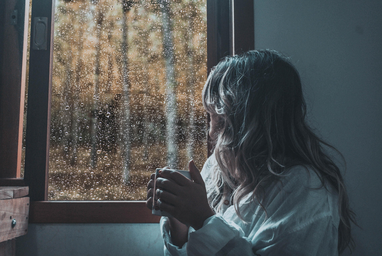TW: Mention of self-harm
Picture this: Daylight Savings has come to an end, and you’re thrilled to be receiving that much-needed “extra” hour of sleep. The temperature slowly begins to drop, the sky is pitch black by 5pm, and it gives you the urge to snuggle up on the couch and binge-watch movies. But, it also makes you sad for a reason you cannot pinpoint. Every single year around this time, without fail, you just want to stay in bed all day because nothing excites you. The thought of spending time with friends and doing the things you usually love has zero appeal. You feel sluggish, but you blame it on the lack of sleep from pulling all-nighters. You’re feeling depressed, but you just attribute it to not being able to go home for the holidays. Suddenly, the classes that you weren’t worried about make you feel hopeless, and there’s no way you’re going to pass this semester. Before you know it, spring makes its debut in March and those negative emotions that you temporarily felt miraculously disappear. What’s that all about?
Well, you’re not wrong to wonder, because these symptoms are caused by a mood disorder – Seasonal Affective Disorder, to be exact. The American Psychiatric Association classifies Seasonal Affective Disorder (commonly abbreviated as SAD) as a form of depression that occurs during the fall and winter months due to the decrease in sunlight. The APA website emphasizes that SAD is deeper than just a bad case of the “winter blues.” This depressive state disrupts daily functioning due to its severity, which can cause the following symptoms:
- Loss of interest in enjoyable activities
- Change in sleep habits/sleeping more than usual
- Loss of energy
- Change in appetite
- Feelings of sadness/hopelessness
- Feelings of worthlessness
- Difficulty thinking, concentrating, and decision-making
- Thoughts of self-harm
While SAD can occur at any age, it is common in people ranging from 18-30, so college students are especially susceptible to the disorder. But there’s encouraging news about SAD: it’s treatable. There are three commonly used treatments of SAD:
Light therapy: A form of therapy that requires an individual to sit in front of a light therapy box, which emits a tremendously bright light. The duration is 20 minutes daily in the morning throughout the winter months. Within the first two weeks of light therapy, people have reported improvements in their mood. This form of treatment can start early in the fall to prevent symptoms.
Cognitive Behavioral Therapy (CBT): If you’ve ever taken a Psych 101 or upper-level psychology course, you’ve probably heard of cognitive behavioral therapy as a form of treatment. Also known as talk therapy or psychotherapy, CBT involves sessions with a professional therapist. The objective of these sessions is for the individual seeking therapy and the therapist to identify and manage their emotions and behaviors.
Antidepressants: Selective serotonin reuptake inhibitors (SSRIs) are antidepressant medications commonly used to treat SAD. A combination of these treatments can significantly diminish the symptoms that individuals experience.
Whether you’ve personally dealt with the effects of SAD or someone close to you faces these symptoms every season, it’s important to note the signs and forms of treatment in order to better understand, manage, and overcome SAD. Your annual feelings of “random” sadness are valid, and you’re not alone this season. Please do not hesitate to reach out for help – fall, winter, spring, or summer.
For more information and further resources regarding SAD, visit the following article from APA: https://www.psychiatry.org/patients-families/depression/seasonal-affective-disorder/
If you’re seeking therapy, but have anxiety when speaking on the phone, I’ve got you covered! 7 Cups is a chat website equipped with therapists that are willing to help any time of the day. 7 Cups is also available on the App Store and Google Play Store for free. https://www.7cups.com/
The Crisis Text Line is also an alternative to speaking on the phone. Just text HOME to 741741 to reach a trained Crisis Counselor.
Substance Abuse and Mental Health Services Administration (SAMHSA) hotline: 1-800-662-4357
If you prefer to meet a professional in person, reach out around campus to wellness services offered to all students. Remember – you’re never alone, no matter the season!


